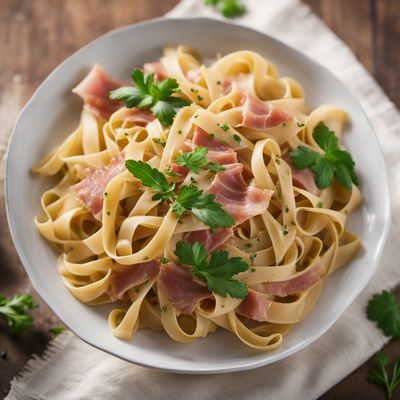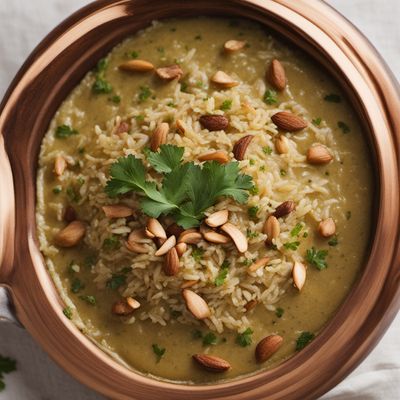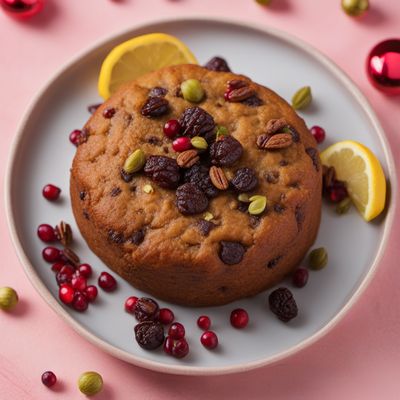
Ingredient
Nutmeg seed
"The Fragrant Jewel: Unveiling the Secrets of Nutmeg Seed"
Nutmeg seed is a small, oval-shaped spice with a hard, brown outer shell. Inside, it reveals a vibrant, reddish-brown seed known as the nutmeg kernel. The seed has a distinct aroma and flavor, characterized by its warm, sweet, and slightly spicy notes. When freshly grated, nutmeg offers a more intense and aromatic experience compared to pre-ground versions. Its texture is fine and powdery, making it easy to incorporate into various recipes. Visually, nutmeg seed showcases a unique marbled pattern on its surface, adding visual appeal to dishes.
Origins and history
Nutmeg seed has a rich history dating back thousands of years. Native to the Banda Islands in Indonesia, it was highly valued by ancient civilizations for its medicinal properties and as a precious spice. Arab traders introduced nutmeg to the Mediterranean region, and it eventually spread to Europe during the Middle Ages. The spice played a significant role in the spice trade and was even a catalyst for exploration and colonization. Today, nutmeg is cultivated in various tropical regions worldwide.
Nutritional information
Nutmeg seed is a good source of essential minerals such as manganese, copper, and magnesium. It also contains dietary fiber and small amounts of vitamins B6 and C. However, it should be used in moderation due to its high concentration of volatile oils.
Allergens
Nutmeg seed is generally considered safe for consumption, but individuals with allergies to spices or tree nuts should exercise caution.
How to select
When selecting nutmeg seed, opt for whole seeds rather than pre-ground powder to ensure maximum freshness and flavor. Look for seeds that are firm, unbroken, and free from mold or moisture. The aroma should be strong and fragrant.
Storage recommendations
To maintain the freshness and flavor of nutmeg seed, store it in an airtight container in a cool, dark place. Whole seeds can last for up to two years, while pre-ground nutmeg should be used within six months.
How to produce
Nutmeg trees require a tropical climate to thrive. While it is challenging for amateurs to grow nutmeg trees outside their natural habitat, they can be grown in large containers indoors in regions with colder climates. The trees require well-drained soil, regular watering, and protection from direct sunlight.
Preparation tips
Grate nutmeg seed using a fine grater or a microplane for the best flavor. It pairs well with both sweet and savory dishes, such as baked goods, custards, soups, stews, and creamy sauces. However, it is important to use nutmeg sparingly as its flavor can easily overpower a dish. Start with a small amount and adjust according to taste.
Substitutions
If nutmeg seed is not available, a suitable substitute would be ground cinnamon or allspice, which offer similar warm and sweet flavor profiles.
Culinary uses
Nutmeg seed is a versatile spice used in a wide range of dishes and cuisines. It is commonly used in baking, adding depth to cakes, cookies, and pies. It is also a key ingredient in classic dishes like béchamel sauce, eggnog, and pumpkin spice blends. In savory dishes, nutmeg enhances the flavors of creamy soups, vegetable gratins, and meat-based dishes.
Availability
Nutmeg seed is commonly available in most grocery stores and supermarkets worldwide. It is also cultivated in countries such as Indonesia, India, Sri Lanka, and Grenada.
More ingredients from this category
Recipes using Nutmeg seed » Browse all

Golfeados with Guava and Cheese
Sweet and Savory Venezuelan Delight: Guava and Cheese Golfeados

Southern Spiced Cookies
Spicy Delights: Southern Twist on Dutch Pepernoot

Mecklenburg-Style Glazed Donuts
Fluffy Delights: Mecklenburg-Style Glazed Donuts

Odia-style Sweet Rice Cake
Divine Delight: Odia Sweet Rice Cake

Anglo-Indian Spiced Yogurt Dessert
Velvety Delight: Anglo-Indian Spiced Yogurt Dessert

Franconian-style Prosciutto Tagliatelle
Savory Franconian Delight: Prosciutto Tagliatelle with a German Twist

Mansaf - Traditional Lebanese Lamb and Rice Dish
Savor the Flavors of Lebanon: Mansaf, a Delightful Lamb and Rice Feast

Karoo Roast Ostrich Steak with Spiced Sweet Potato Mash
Savory Delight: Karoo Roast Ostrich Steak with Spiced Sweet Potato Mash

Indian Spiced Christmas Pudding
Festive Fusion: Indian Spiced Christmas Pudding with a Twist

Guinean Honey Cake
Savory Sweetness: Guinean Honey Cake Delight

Dutch-style Egg Croquettes
Golden Delights: Dutch-style Egg Croquettes

Murgh Malai - Haute Cuisine Style
Elevated Creamy Chicken Delight
